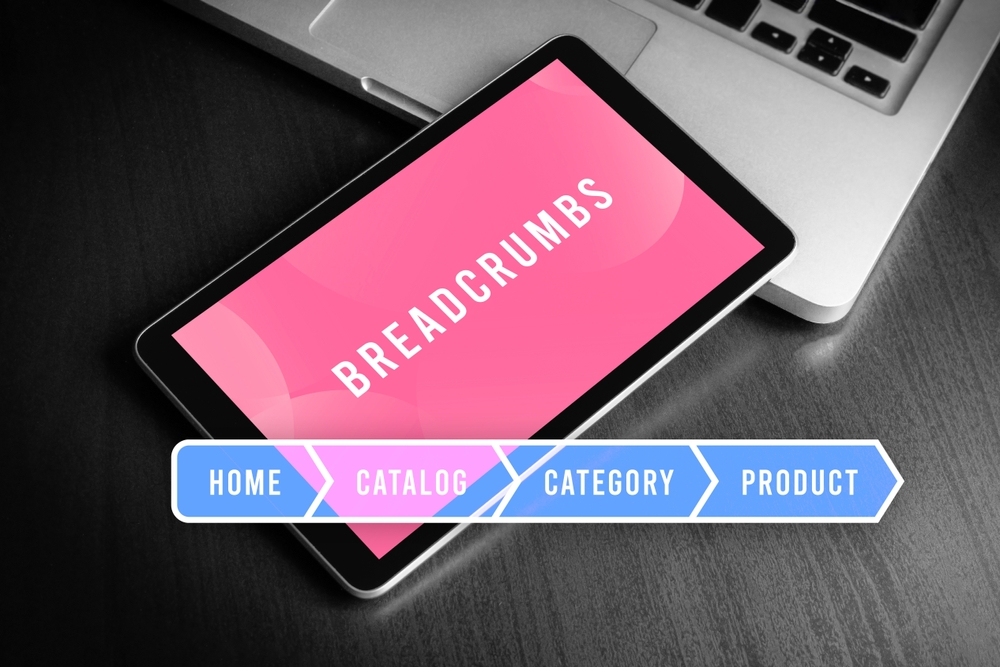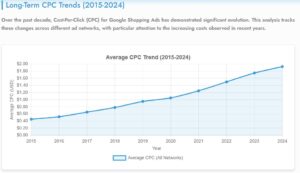In the vast landscape of e-commerce websites, helping customers navigate efficiently can significantly impact your conversion rates and user satisfaction. Just as Hansel and Gretel used breadcrumbs to find their way home, your customers need a clear path to navigate through your online store.
At Rank Fuse Digital Marketing, we’ve discovered that effective breadcrumb navigation can reduce bounce rates by up to 45 percent and increase pages per session by 30 percent. Let’s explore how to create and implement breadcrumb navigation that enhances your e-commerce user experience.
Understanding Breadcrumb Navigation
Breadcrumb navigation serves as a secondary navigation scheme that reveals the user’s location within a website’s hierarchy. Think of it as a digital trail showing the path from the homepage to the current page. This navigation style is particularly crucial for e-commerce sites with deep hierarchical structures and numerous product categories.
The Three Types of Breadcrumbs
E-commerce websites typically employ three main types of breadcrumb navigation:
Location-based breadcrumbs show the hierarchical path from homepage to current page. For example: Home > Electronics > Smartphones > iPhone 14 Pro
Attribute-based breadcrumbs display the attributes selected to reach the current page: Home > Electronics > Color: Black > Price: $500-$1000
History-based breadcrumbs show the user’s unique navigation path: Previous Page > Current Page
Implementing Effective Breadcrumb Navigation
HTML Structure and Schema Markup
The proper HTML structure ensures both user-friendliness and search engine optimization. Here’s how to implement breadcrumbs with schema markup:
htmlCopy<nav aria-label="breadcrumb">
<ol class="breadcrumb" itemscope itemtype="https://schema.org/BreadcrumbList">
<li itemprop="itemListElement" itemscope itemtype="https://schema.org/ListItem">
<a href="/" itemprop="item">
<span itemprop="name">Home</span>
</a>
<meta itemprop="position" content="1" />
</li>
<!-- Additional breadcrumb items follow the same pattern -->
</ol>
</nav>
CSS Styling Best Practices
Your breadcrumb styling should balance visibility with subtlety:
cssCopy.breadcrumb {
background: transparent;
padding: 0.75rem 1rem;
margin-bottom: 1rem;
}
.breadcrumb-item + .breadcrumb-item::before {
content: ">";
color: #6c757d;
}
.breadcrumb-item a {
color: #007bff;
text-decoration: none;
}
.breadcrumb-item.active {
color: #6c757d;
}
Mobile-First Breadcrumb Design
Responsive Considerations
Mobile users require special attention when implementing breadcrumbs:
- The navigation should adapt to smaller screens without breaking
- Use appropriate touch targets (minimum 44×44 pixels)
- Consider collapsible breadcrumbs for very long paths
- Implement swipe gestures for horizontal scrolling
- Use clear visual separators between elements
Progressive Enhancement
Build your breadcrumb navigation with a mobile-first approach:
- Start with essential elements for mobile devices
- Add enhanced features for larger screens
- Ensure touch-friendly interaction points
- Maintain consistent spacing across devices
- Test across various screen sizes and orientations
SEO Benefits of Proper Breadcrumb Implementation
Search Engine Visibility
Well-implemented breadcrumbs contribute to SEO through:
- Enhanced site structure understanding by search engines
- Improved internal linking architecture
- Better crawl efficiency
- Rich snippet opportunities in search results
- Clearer context for search engine bots
Schema.org Implementation
Proper schema markup helps search engines understand your site structure:
- Use Breadcrumb
- List schema type Include all relevant properties (name, item, position)
- Validate markup using Google’s Rich Results Test
- Monitor implementation through Search Console
- Update schema as your site structure changes
User Experience Enhancement Strategies
Visual Design Elements
Create an intuitive visual hierarchy through:
- Clear typography that matches your brand
- Consistent spacing between elements
- Subtle yet visible separators
- Color contrast for accessibility
- Interactive hover states
- Current page indicators
Interaction Design
Optimize the user interaction with:
- Clear clickable areas
- Hover state feedback
- Touch-friendly targets
- Keyboard navigation support
- Screen reader compatibility
- Loading state indicators
Advanced Implementation Techniques
Dynamic Breadcrumb Generation
Implement dynamic breadcrumbs using JavaScript:
javascriptCopyfunction generateBreadcrumbs(path) {
const pathSegments = path.split('/').filter(Boolean);
let currentPath = '';
return pathSegments.map((segment, index) => {
currentPath += `/${segment}`;
return {
name: formatSegmentName(segment),
path: currentPath,
position: index + 1
};
});
}
function formatSegmentName(segment) {
return segment
.split('-')
.map(word => word.charAt(0).toUpperCase() + word.slice(1))
.join(' ');
}
Error Handling and Edge Cases
Consider various scenarios:
- Deep category hierarchies
- Missing or broken links
- Custom routing patterns
- Dynamic content loading
- Multi-language support
- Fallback options
Performance Optimization
Loading Speed
Optimize breadcrumb performance:
- Minimize DOM elements
- Reduce JavaScript overhead
- Implement lazy loading for dynamic elements
- Cache frequently accessed paths
- Use efficient selectors
- Monitor render performance
Browser Compatibility
Ensure consistent behavior across:
- Different browsers
- Operating systems
- Device types
- Screen resolutions
- Connection speeds
- User preferences
Analytics and Tracking
Measuring Effectiveness
Track key metrics:
- Click-through rates on breadcrumb links
- Navigation patterns
- Exit rates from different levels
- Time spent on navigation
- Error frequencies
- Mobile vs desktop usage
Implementation
Set up proper tracking:
javascriptCopyfunction trackBreadcrumbClick(level, path) {
analytics.track('Breadcrumb Click', {
level: level,
path: path,
timestamp: new Date().toISOString(),
device: detectDeviceType()
});
}
Future-Proofing Your Breadcrumb Navigation
Emerging Technologies
Prepare for future developments:
- Voice navigation integration
- AR/VR compatibility
- AI-powered navigation suggestions
- Progressive web app implementation
- Cross-device synchronization
- Predictive navigation patterns
Maintenance and Updates
Establish regular maintenance procedures:
- Monitor user feedback
- Update schema markup
- Review analytics data
- Test new features
- Optimize performance
- Document changes
Effective breadcrumb navigation is essential for creating a user-friendly e-commerce experience. By implementing these best practices while considering mobile users, SEO requirements, and performance optimization, you can create a navigation system that enhances user experience and drives conversions.
Remember that breadcrumb navigation is not just about showing a path–it’s about creating an intuitive journey through your e-commerce site that helps users find what they need quickly and efficiently.
Need expert help implementing these strategies or optimizing your e-commerce site’s navigation? Contact Rank Fuse Digital Marketing for a customized solution that drives results for your business.





